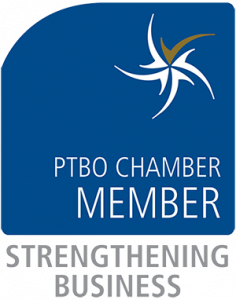
Canadians are growing increasingly aware of the importance of oral health. According to the Canadian Dental Association, 74.5% of Canadians visited a dentist in the past year, which is up from 49.5% in the 1970s. With increased demand for dentistry comes greater opportunity for anyone looking for a stable and well-paying career in the dentistry field, specifically for a dental assistant career.
In Ontario, there are two types of dental assistants: Level I and Level II. Level II dental assistants perform most of the tasks that a Level I assistant is responsible for as well as several more advanced techniques. When you attend Oxford College’s dental assistant program, you’ll learn the skills that both Level I and II assistants need—skills that employers look for in their candidates. Read on to learn what some of those skills are and how they can help you get noticed by employers.
1. All Dental Assistants Should Know How to Complete Chairside Duties
Level I dental assistants are sometimes referred to as chairside dental assistants because much of their work is spent sitting beside the patient’s chair. During your dental assistant course, you’ll learn the chairside skills that Level I assistants need to know. You’ll be trained in how to clean and sterilize medical instruments, prepare the clinical area, pass instruments to the hygienist or dentist, give patients instructions on oral hygiene and prepare them to see the dentist. You’ll also learn more technical skills, such as taking and developing X-rays and how to prepare filling materials. These are skills that are considered fundamental for any dental assistant career and employers will expect you to have them.
 You’ll learn how to educate patients in oral hygiene in Oxford College’s dental assistant program
You’ll learn how to educate patients in oral hygiene in Oxford College’s dental assistant program
2. The Intra-Oral Techniques You’ll Learn in Dental Assistant Training Will Help You Stand Out
The main difference between Level I and Level II Dental Assistants is that a Level II assistant can perform intra-oral care. Intra-oral care refers to dental procedures performed inside patients’ mouths. Since these techniques are considered more advanced, they are highly in demand by employers.
During your dental assistant training, you’ll learn to perform a number of intra-oral techniques, such as applying topical anaesthetics, anti-cariogenic agents and desensitizing agents. You’ll also be trained to apply and remove rubber dams as well as remove sutures, which are also considered intra-oral responsibilities. Listing these skills on your resume will assure employers that you are ready to tackle the requirements of being a dental assistant from your first day on the job.
3. A Dental Assistant Program Provides Administrative Skills That You’ll Use On the Job
You may be surprised to find out that dental assistants have quite a few administrative duties on top of their clinical work. While most dental offices will have a receptionist to take care of some administrative tasks, the dental assistant will still need to master a few of their own. Fortunately, Oxford College’s dental assistant program covers the administrative tasks that dental assistants use on the job. For example, you will learn how to keep records of the procedures you perform, how to invoice patients and how to schedule future appointments. During your training, you will also learn some basic inventory management skills, including how to order dental and office supplies. Having these administrative skills gives you an advantage when looking for a job, since dentists know that you can help their offices run efficiently.

In our dental assistant training you’ll learn important administrative skills, like scheduling appointments
Interested in pursuing a career as a dental assistant?
Contact Oxford College to learn about our dental assistant courses!






